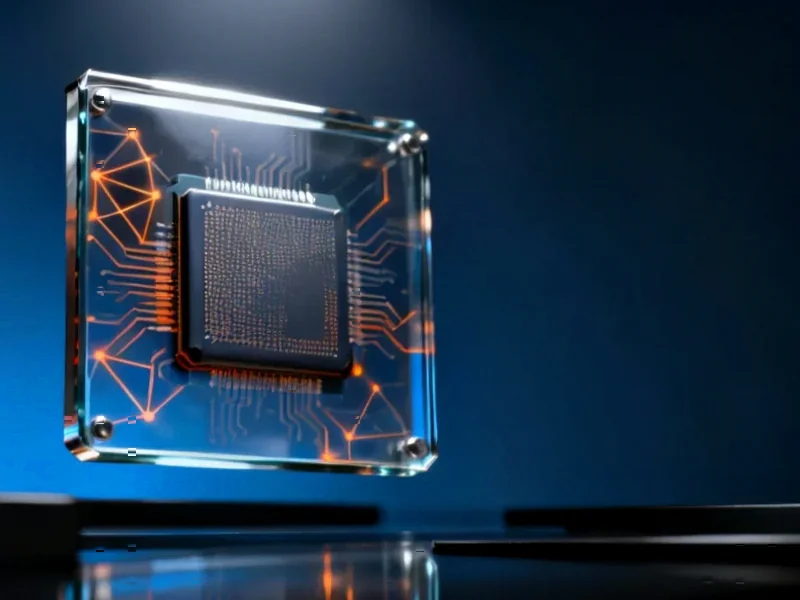The New Frontier: AI Compute Migrates to Space
In a groundbreaking development that could reshape the future of computing infrastructure, NVIDIA’s AI chips are preparing for their first extraterrestrial deployment. Startup Starcloud is set to launch orbital data centers featuring NVIDIA’s H100 AI GPUs, marking a significant leap in space-based computing capabilities. This initiative addresses the growing sustainability concerns surrounding terrestrial data center expansion while unlocking unprecedented computational potential.
Table of Contents
Earth’s Computing Conundrum
The relentless expansion of AI infrastructure on Earth has created what many industry experts call an “unsustainable trajectory.” Major technology companies are deploying multi-gigawatt AI facilities worldwide, consuming vast amounts of electricity and land resources. The environmental impact extends beyond energy consumption to include significant water usage for cooling systems and substantial carbon emissions. This terrestrial approach faces physical and environmental limitations that threaten to constrain future AI development and deployment.
“The current paradigm of building ever-larger data centers on Earth simply isn’t sustainable long-term,” explains Dr. Elena Rodriguez, a space infrastructure analyst. “We’re hitting physical constraints in terms of power availability, cooling capacity, and suitable land. Space offers solutions to all these challenges simultaneously.”
Starcloud’s Orbital Solution
Starcloud’s innovative approach involves deploying compact, high-performance data centers in Earth’s orbit. The company‘s Starcloud-1 satellite, weighing approximately 60 kilograms, will host NVIDIA H100 AI GPUs capable of delivering computing power reportedly 100 times greater than any existing space-based operation. This represents not just an incremental improvement but a quantum leap in extraterrestrial computing capabilities.
The orbital environment provides two critical advantages that terrestrial facilities cannot match: virtually unlimited solar power and natural vacuum cooling. In space, solar panels can operate continuously without atmospheric interference or nighttime limitations, eliminating the need for battery backup systems. Meanwhile, the deep-space vacuum serves as an ideal heatsink, allowing for efficient thermal management without water consumption., according to technological advances
Technical Innovations and Environmental Benefits
The space-based data center model addresses multiple environmental concerns simultaneously. By emitting waste heat through infrared radiation directly into space, these orbital facilities conserve the significant water resources typically required for cooling terrestrial data centers. Industry estimates suggest that a single large data center can consume between 1-5 million gallons of water daily for cooling purposes – water that could be preserved for human consumption and agriculture., as detailed analysis
Additionally, the constant solar exposure in orbit provides what NVIDIA describes as “infinite solar power,” enabling continuous operation without reliance on terrestrial power grids or fossil fuels. This approach could significantly reduce the carbon footprint associated with AI computing while providing more reliable power than Earth-based renewable sources subject to weather conditions and diurnal cycles., according to industry news
- Zero water consumption for cooling operations
- Continuous solar power without storage limitations
- Reduced land usage and terrestrial environmental impact
- Enhanced computational density through optimized space utilization
Industry Implications and Future Outlook
Starcloud’s participation in NVIDIA’s Inception program highlights the growing recognition that solving computing’s sustainability challenges requires radical innovation. The program connects promising startups with NVIDIA’s technical expertise and resources, accelerating development of transformative technologies.
Philip Johnston, Starcloud’s CEO, has made bold predictions about the industry’s future direction: “Within the next decade, we anticipate the majority of new data center capacity will be deployed in space. The economic and environmental advantages are simply too compelling to ignore.”
This vision, while ambitious, reflects growing recognition within the industry that current approaches to data center expansion face fundamental limitations. As AI models grow increasingly complex and computationally intensive, the demand for sustainable computing infrastructure will only intensify.
Challenges and Competitive Landscape
Despite the promising advantages, space-based data centers face significant technical and logistical challenges. Launch costs, while decreasing, remain substantial. Radiation hardening of computing equipment requires specialized engineering, and latency issues for certain applications must be carefully managed. However, proponents argue that these challenges are surmountable and represent one-time investments that yield long-term benefits.
The emergence of space-based computing infrastructure has attracted attention from multiple industry players beyond Starcloud. While specific competitors haven’t announced similar initiatives publicly, industry observers note that companies like SpaceX and Blue Origin possess the launch capabilities and technical expertise to potentially enter this market. The race to dominate orbital computing could mirror the intense competition currently seen in terrestrial AI infrastructure development.
As terrestrial computing faces increasing environmental and resource constraints, the migration to space represents not just an alternative approach, but potentially the next evolutionary step in computing infrastructure. The success of Starcloud’s initial deployment could catalyze broader industry movement toward orbital computing solutions, fundamentally reshaping how we power and cool the AI systems that are becoming increasingly central to modern civilization.
Related Articles You May Find Interesting
- Samsung Enters HBM4 Memory Race with Public Debut, Challenging SK Hynix and Micr
- Samsung’s Galaxy XR Headset Challenges Apple’s Vision Pro with Aggressive Pricin
- UK Regulators Target Tech Titans: New Rules for Apple and Google’s Mobile Domina
- CISA’s Critical Partnership Division Dismantled in Major Cybersecurity Restructu
- How AWS’s Custom AI Chips Are Revolutionizing Biotech Research Costs
References & Further Reading
This article draws from multiple authoritative sources. For more information, please consult:
- https://blogs.nvidia.com/blog/starcloud/?linkId=100000388085273
- https://profile.google.com/cp/Cg0vZy8xMWM3NDB2MmIyGgA
- https://google.com/preferences/source?q=wccftech.com
This article aggregates information from publicly available sources. All trademarks and copyrights belong to their respective owners.
Note: Featured image is for illustrative purposes only and does not represent any specific product, service, or entity mentioned in this article.



